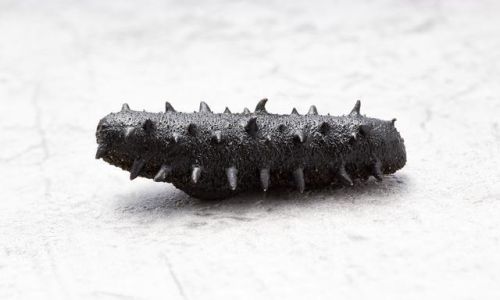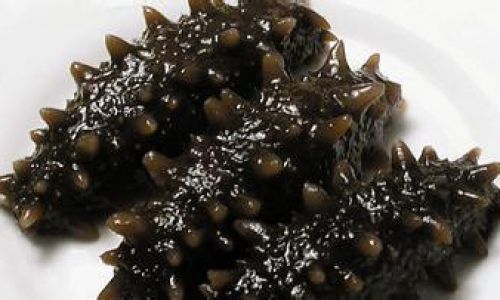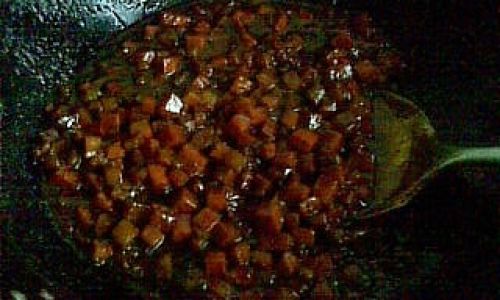Introduction
Sea cucumbers, scientifically known as holothurians, are marine invertebrates that have been valued in traditional medicine and cuisine for centuries. Among the various preparations, salt-preserved sea cucumbers (often referred to as salted sea cucumbers or simply salt-preserved holothurians) are a popular form due to their extended shelf life and concentrated flavor. These preserved delicacies are typically soaked and rehydrated before consumption to restore their texture and remove excess salt. This guide provides a detailed, step-by-step process for soaking and rehydrating salt-preserved sea cucumbers, ensuring they are ready for use in various dishes.
Understanding Salt-Preserved Sea Cucumbers

Salt-preserving is a traditional method of preserving sea cucumbers by packing them in layers of coarse salt. This process draws out moisture from the sea cucumbers, creating an environment hostile to microbial growth, thereby extending their shelf life. However, this also means that before consumption, the sea cucumbers must undergo a thorough soaking process to remove the excess salt and restore their natural texture.
Why Soak and Rehydrate?
Soaking and rehydrating salt-preserved sea cucumbers serve several purposes:
- Salt Reduction: The primary reason is to reduce the high salt content accumulated during the preservation process.
- Texture Restoration: The dehydration process alters the sea cucumber’s texture. Soaking helps restore its firmness and elasticity.
- Flavor Enhancement: Proper soaking allows the sea cucumber to absorb water, enhancing its natural flavor and making it more palatable.
- Preparation for Cooking: Soaked sea cucumbers are ready for various cooking methods, such as steaming, boiling, or stir-frying.
Materials Needed
Before starting the soaking process, you will need:
- Salt-preserved sea cucumbers
- A large, clean container with a lid (preferably non-reactive, such as glass or stainless steel)
- Purified water or filtered tap water
- A clean cloth or kitchen towel
- A strainer or colander
- A cutting board and knife (for trimming, if necessary)
- A refrigerator (for intermediate storage)
Step-by-Step Soaking and Rehydrating Process
Step 1: Preparation

- Inspection: Begin by inspecting the salt-preserved sea cucumbers. Look for any signs of mold, discoloration, or unusual odors. Discard any compromised specimens.
- Rinsing: Rinse the sea cucumbers under cold running water to remove any loose salt or debris. Pat them dry with a clean cloth.
Step 2: Initial Soaking
- Water Preparation: Fill your large container with enough purified water to fully submerge the sea cucumbers. Use cold or lukewarm water; hot water can damage the texture.
- Submersion: Place the rinsed sea cucumbers in the container, ensuring they are fully submerged.
- Soaking Period: Allow the sea cucumbers to soak for at least 12 hours, preferably in the refrigerator to maintain a consistent, cool temperature. This initial soak helps to begin the process of drawing out excess salt.
Step 3: Changing Water
- Drain and Rinse: After the initial soak, drain the water from the container. Rinse the sea cucumbers under cold running water.
- Repeat Soaking: Refill the container with fresh purified water and submerge the sea cucumbers again. Continue this process of soaking, draining, and rinsing every 12 hours for a total of 3 to 4 days, depending on the saltiness of the sea cucumbers and your personal preference for taste and texture.
Note: During this period, it’s crucial to monitor the water regularly. If it becomes excessively salty or develops a strong odor, change it more frequently.
Step 4: Advanced Soaking Techniques
For particularly salty or dense sea cucumbers, you may need to employ advanced soaking techniques to ensure thorough desalination and texture restoration:
- Boiling Water Soak: After the initial few days of soaking, you can boil a pot of water and let it cool slightly before using it for soaking. The warmth helps accelerate the desalination process but be cautious not to use water that is too hot, as it can compromise the texture.
- Soaking with Rice Wine Vinegar: Some chefs recommend adding a small amount of rice wine vinegar to the soaking water in the final stages. This helps to neutralize any remaining saltiness and enhance the flavor. However, use this method sparingly, as too much vinegar can overpower the natural taste of the sea cucumbers.
Step 5: Final Preparation
- Texture Check: After the final soak, inspect the sea cucumbers for firmness and elasticity. They should feel plump and resilient when gently squeezed.
- Trimming: If necessary, use a sharp knife to trim off any hardened or discolored parts of the sea cucumbers.
- Storage: If you are not ready to use the sea cucumbers immediately, you can store them in a sealed container with fresh water in the refrigerator for up to a week. Change the water every other day to maintain freshness.
Cooking with Soaked Sea Cucumbers

Now that your salt-preserved sea cucumbers are properly soaked and rehydrated, they are ready for various cooking methods:
- Steaming: Steam the sea cucumbers for about 10-15 minutes until they are cooked through but still retain some firmness. This method is ideal for preserving their natural flavor and texture.
- Boiling: Boil the sea cucumbers in lightly salted water for about 20-30 minutes, depending on their size. This method is suitable for dishes that require a softer texture.
- Stir-Frying: Slice the sea cucumbers into strips or pieces and stir-fry them with vegetables, meats, or seafood in a hot wok or skillet. This method adds a unique texture and flavor to stir-fries.
- Soup Making: Add soaked and sliced sea cucumbers to soups or broths during the final stages of cooking. Their natural gelatinous properties will enrich the soup’s texture and flavor.
Tips for Successful Soaking and Rehydration
- Patience is Key: The soaking process can be time-consuming, but rushing it can result in sea cucumbers that are either too salty or overly soft.
- Consistent Temperature: Maintaining a consistent, cool temperature throughout the soaking process helps to preserve the sea cucumbers’ texture and flavor.
- Quality of Water: Using purified or filtered water ensures that no impurities are introduced during the soaking process.
- Personal Preference: The exact soaking time may vary based on personal preference for taste and texture. Experiment to find what works best for you.
Conclusion
Soaking and rehydrating salt-preserved sea cucumbers may seem like a labor-intensive process, but the end result is well worth the effort. Properly prepared sea cucumbers offer a unique texture and flavor that can elevate various dishes to new heights. By following this comprehensive guide, you can ensure that your salt-preserved sea cucumbers are perfectly soaked, rehydrated, and ready for any culinary adventure. Whether you’re a seasoned chef or a home cook exploring new ingredients, mastering the art of soaking and rehydrating salt-preserved sea cucumbers will undoubtedly expand your culinary repertoire and delight your taste buds.




0 comments